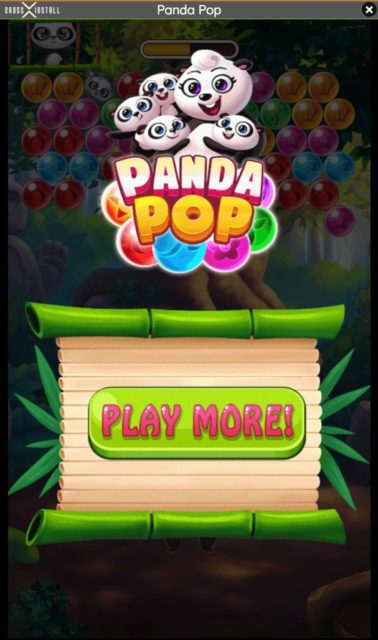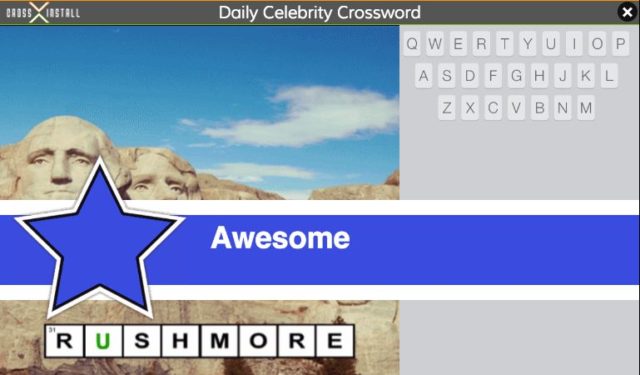As mobile ads continue to grow in importance as solutions to the app discovery problem, advertisers are constantly looking for ways to improve the performance of mobile ads. One such method is the playable, interactive mobile ad, which mobile advertising DSP CrossInstall has been creating and deploying with great success.
Founded in 2012 by several advertising and gaming executives, CrossInstall is a bootstrapped company created to support mobile user acquisition on both the iOS and Android platforms through programmatic bidding. As their website notes, “CrossInstall offers a unique approach to mobile game advertising as it combines custom-built playable mobile gaming ads with a programmatic, performance based bidder ensuring the ads hit the right audience.”
 CrossInstall creates its playable ads using a combination of HTML 5 and JavaScript, and uses a customized bidder with proprietary algorithms to deliver those ads. “The performance-based bidder drives app installs for advertisers at scale on various mobile ad exchanges including DoubleClick, MoPub and others,” notes CrossInstall on their website. CrossInstall’s clients among mobile game publishers includes Game Show Network, Machine Zone, SGN, PuzzleSocial, Pocket Gems, NaturalMotion and Big Fish Games among others.
CrossInstall creates its playable ads using a combination of HTML 5 and JavaScript, and uses a customized bidder with proprietary algorithms to deliver those ads. “The performance-based bidder drives app installs for advertisers at scale on various mobile ad exchanges including DoubleClick, MoPub and others,” notes CrossInstall on their website. CrossInstall’s clients among mobile game publishers includes Game Show Network, Machine Zone, SGN, PuzzleSocial, Pocket Gems, NaturalMotion and Big Fish Games among others.
Two notable case studies shown on CrossInstall’s website are with PuzzleSocial (and their game Daily Celebrity Crossword) and with SGN (and their game Panda Pop). CrossInstall found with Daily Celebrity Crossword that new user growth was 20 percent higher, and the campaign resulted in about 50 percent of programmatic traffic and 20 percent of overall traffic. “Since we started working with CrossInstall we have experienced impressive new user growth,” said Shamanth Rao, director of acquisition at PuzzleSocial. “Because of the highly engaging nature of playable ads, our conversion rates on playables from CrossInstall are about 20 to 25 percent higher, allowing us to scale aggressively.”
With SGN, CrossInstall produced double-digit increases in both LTV and revenue for Panda Pop. “With one of the highest ARPI, player/user percentage, day one retention rate, and LTVs we have seen to date, CrossInstall has proven to be a top, consistent install provider for Panda Pop and other key titles,” said Sumee Oh, director of marketing and user acquisition at SGN.

Jeff Marshall, CEO of CrossInstall, spoke with [a]listdaily recently about their playable, programmatic mobile ads and how they are performing for mobile games.
How did CrossInstall get into playable ads?
We started CrossInstall started about four years ago, focused as a mobile DSP [demand-side platform] working in the programmatic space. I did game development for a number of years along with some of the other co-founders, so we knew that space well. We worked mostly with gaming clients. They’re sophisticated buyers on mobile, focused on their return on ad spending and how to measure that well. About a year ago we started getting into the interactive ads. The years before that we would just work with whatever ad creatives the advertisers would send us—their videos, their image ads—but then we decided to take on doing the creatives ourselves. We found that interactive is really the way to go. It gives so much more power to both the process of creating the ads and iterating on the campaigns. In the end it’s just higher quality traffic for the advertiser. Giving users a preview of what the app is like is a powerful concept.
How effective are your playable ads compared to ordinary mobile advertising?
We’ve done some benchmarks, and we’ll see about a 3x conversion difference between a standard full screen image ad versus a playable ad. Right off the bat, it’s more engaging and it gets a higher conversion rate than your traditional ads.
How difficult is it to create these playable ads? They must be more difficult to create than ordinary ads. What’s the process like?
It’s a fairly difficult process. What’s appropriate for a 20-or 30-second ad experience? That’s one of the challenges. It’s not just about ‘you have a crossword game, I’m going to pop a crossword in front of you.’ You really have to take some care and thought into how you are going to present that in a short ad experience, while still focusing on what the core mechanic of this app is that we’re trying to advertise.
It usually kicks off with a brainstorming process with our creative team in-house. We’ll try a bunch of concepts, we’ll storyboard those, go back to the advertisers and go through the storyboards and see how they feel. It’s all HTML 5/JavaScript. The design and development process takes place here, and we’ll review that with the client. Typically the clients care about how their brand is presented—they’re the experts in what their app is like and they want to make sure the experience reflects that well.
Now we start running this creative. Since we’re doing a programmatic buy, we’ve got our algorithms in the background that are trying to model what users are going to take action, convert, and become good quality, post-install users. So it’s out there doing the buying and trying to price these impressions. The creatives themselves, we’ll change that and iterate over time. We’re capturing data on what people are doing. If you start interacting, how long does it take before you interact, how many times do you interact with the ad, what elements are people reacting to? All those stats are collected and those ads are dynamically changed on the fly. It’s an ongoing process; the campaigns definitely iterate over time.
Do playable ads work better for certain types of games more than others?
We’re seeing them working pretty much across the board. You’ve got very casual titles, there’s also non-gaming social applications and things like that, then you have your hardcore RPG games—it works well there, too. The thing that changes is what you want to do in the creative itself. If you have a very casual title—a match-3 game—you’re going to probably end up being true to the application. If you have a hardcore RPG it’s hard to make a twenty second experience that really shows you what that roleplaying game is like. So you capture a couple of mechanics of it, or you just play off of the theme. You have to get more creative the more hardcore the game gets, and with the lighter games or applications you can be more true to the experience.
What kind of reach do you have with these ads, and what kind of scale are you seeing?
That’s what’s been really fun about the programmatic part. We’re buying in all the real-time ad exchanges, so the reach touches about every mobile user out there. We’re working with Google, Twitter, Rubicon and a number of these other companies. We’re seeing up to a billion unique device IDs in a week. We can reach globally. The challenge in the programmatic space is it’s a competitive bidding environment, so you have to have the algorithms to back it up and buy intelligently.
What’s ahead for CrossInstall in the next year?
We’re a small company—24 people now—we’ve been a bootstrap company to this point and we’re capturing a lot of success now. We want to be the top mobile DSP out there, and be the clear choice if you want to do performance buying. If you want to do interesting things with creatives, we want people to think of CrossInstall. We’re already one of the top DSPs out there in terms of what the ad exchanges tell us, but we’d like to be the clear winner on that. Gaming is our background and it’s been our focus, but we want to spread outside of gaming as well and grow that side of the business next year.

